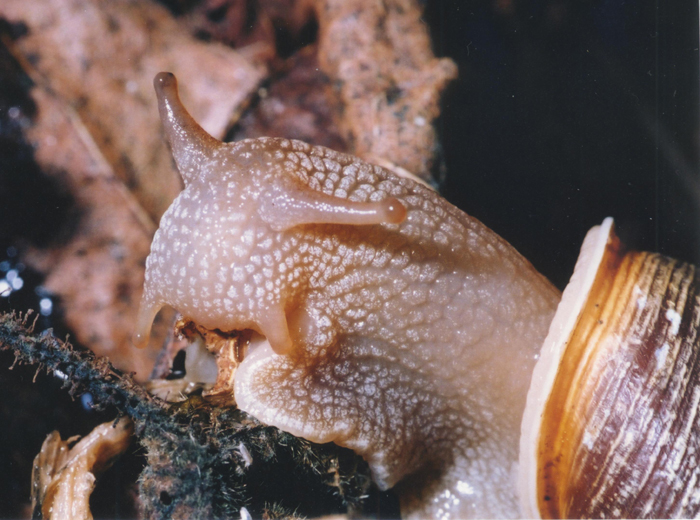
Interactions
Not much is known about the
daily interactions in the life of Allogona
townsendiana. But interactions between it and
it's close relative ,which it is most likely to be confused with, the
Idaho Forestsnail (Allogona ptychophora) are a subject with
a little research. A.
ptychophora is very similar but the shell is slightly smaller and has more clearly developed axial riblets (Forsyth
et al 2002). Some examples of interactions with habitat include
A. townsendiana's preference for herbaceous
vegetation, especially stinging nettle and
slightly smaller and has more clearly developed axial riblets (Forsyth
et al 2002). Some examples of interactions with habitat include
A. townsendiana's preference for herbaceous
vegetation, especially stinging nettle and
sword fern communities found in association with bigleaf maple,
salmonberry and red alder (Conservation
Concern, 2010). Predatory interactions are probably the most
common interaction of A. townsendiana. Predation
constitutes a significant source of mortality of A. townsendiana
(Forsyth
et al 2002). A wide variety of mammals, birds,
amphibians, reptiles and invertebrates prey on and snails like
A. townsendiana, even other snails. Carnivorous
snails of the British Columbia habitat include several widespread
and abundant native forest species (Haplotrema
vancouverense, Ancotrema sportella and A. hybridum) (Forsyth
et al 2002). Numerous exotic species may also pose a problem for
native land snails through predation or competition for resources.
Certain exotic slugs (such as Arion rufus and Deroceras
reticulatum) reach very high densities in localized areas and
may potentially compete with A. townsendiana for food and
other resources (Cameron
1986 in
Forsyth et al 2002).